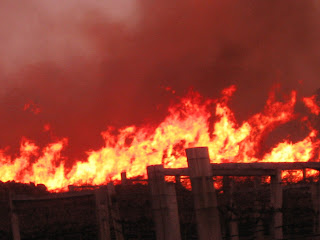I know that a lot of lucky people have this experience, but until we moved here, all that I'd known, in Brisbane, were coolish winters and hot, humid summers.
Spring and Autumn never loomed large on my seasonal radar--they were there somewhere, ill-defined. Not clearly recognisable.
Here we can actually see the signs of the seasons, and I love this natural sequence.
Officially Spring is still a day or two away, but around me I can see signs that it has arrived.
The colours of the Spring blossoms are beautiful. There is a LOT of PINK!
Our deciduous Magnolias are in bloom, with their goblet-shaped flowers. Glorious.
And our neighbouring farmer has paddocks of pink as his Nectarine trees are bursting into blossom.
The blossoms are delicate in both colour and appearance.
The Prunus ( above) is more of a reddish hue, and adds more vibrancy to the scene.
And the Wattle (Acacia amoena) is out. All over the Stanthorpe area there are patches of yellow and gold from the wattle trees. It is very beautiful.
Trees like this are scattered everywhere, and provide that vivid spalsh of bright yellow. Fantastic!
And add a splash of colour with bright orange Calendulas.
Now to the other end of the spectrum, just for contrast.
The Irises are a brilliant blue, almost purple, as are the Violets.
And last, but not least, there's a lot of white foliage about.
In the garden we have jonquils.
Also, we have an Almond tree which, in the Spring, is a picture, covered with white flowers.
When you stand near it, all you can hear is the drone of buzzing bees. The blossoms must be rich in nectar.
And there are other white patches about the area because the plum trees are in bloom, as are the Manchurian Pear trees.
And apple blossoms are white too.
So there are some of the colours of Spring, here at our farm.
Not the complete spectrum, but a colourful palette none the less.
Did you enjoy the photos?



















